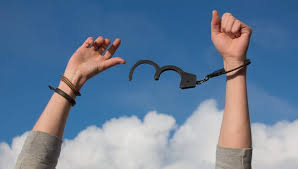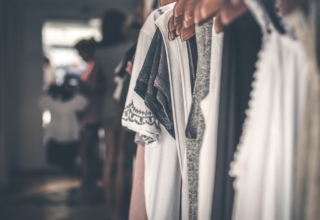
Grateful Dead graphics are some of the most recognizable and beloved symbols in rock history. From the vibrant dancing bears to the enigmatic Steal Your Face skull, these images have become synonymous with the band’s culture, ethos, and music. However, the significance behind these graphics goes beyond their surface-level appeal; they are rich in meaning, deeply connected to the Grateful Dead’s artistic vision, and reflective of the countercultural movement that surrounded the band.
In this article, we’ll take a closer look at some of the most iconic Grateful Dead graphics, uncovering the meaning behind these timeless designs and their lasting impact on pop culture and fashion.
Table of Contents
1. The Steal Your Face Skull
Perhaps the most iconic Grateful Dead symbol, the Steal Your Face skull (also known as the “Lightning Skull” or simply “Stealie”) is instantly recognizable to Deadheads and non-fans alike. The image consists of a stylized skull, with a red and blue lightning bolt cutting through the center.
The Steal Your Face skull first appeared on the album cover of Steal Your Face (1976), a live album recorded at Winterland Ballroom in San Francisco. The design was created by Owsley “Bear” Stanley, the band’s sound engineer and famous LSD chemist, along with artist Bob Thomas. Originally, the design was meant to be a practical solution to a problem: Owsley wanted a simple, bold graphic to mark the band’s equipment so that it would be easy to identify at festivals. The logo became so iconic that it evolved into one of the most enduring symbols associated with the Grateful Dead.
The skull and lightning bolt are often interpreted as representing the dichotomy between life and death, or chaos and order—fitting themes for a band whose music frequently touched on existential and spiritual themes. The red and blue colors can be seen as symbols of duality (such as day and night, earth and sky, or male and female), while the lightning bolt cutting through the skull adds a sense of energy and spontaneity, reflective of the Grateful Dead’s improvisational music style.
Over time, the Steal Your Face skull became more than just a logo—it became a symbol of the Grateful Dead’s philosophy of embracing life’s unpredictability, living in the moment, and accepting both the highs and lows with equal grace.
2. The Dancing Bears
The Dancing Bears are another beloved Grateful Dead image, often seen in rainbow-colored lines, joyfully strutting along. Though they are frequently associated with the band, the bears weren’t originally meant to be a major symbol—they became an accidental icon over the years.
The Dancing Bears first appeared on the back cover of History of the Grateful Dead, Volume One (Bear’s Choice) (1973), an album that was a tribute to Owsley “Bear” Stanley, who was also the inspiration behind the bears themselves. The bears were designed by Bob Thomas, a close collaborator with the band. While the bears are often thought of as “dancing,” they are actually marching—a small but significant distinction.
The bears are often seen as playful and whimsical, representing the lighter, more carefree side of the Grateful Dead’s ethos. For many, they symbolize the community spirit of the band’s followers—each bear is unique, colourful, and moving in its own rhythm, just like the diverse, free-spirited individuals who make up the Deadhead community.
Some fans also believe that the bears could symbolize a nod to Bear Stanley himself, who was known for his role in the counterculture movement and the Grateful Dead’s inner circle. The vibrant colors and joyful movement of the bears convey a sense of unity, diversity, and individuality—qualities that were central to the Grateful Dead’s philosophy.
3. The Dancing Skeletons
Skeletons are a recurring motif in Grateful Dead imagery, often depicted in playful or surreal scenarios dancing, playing musical instruments, or holding roses. This imagery might seem macabre at first, but it is deeply rooted in the band’s outlook on life, death, and the cyclical nature of existence.
The Grateful Dead’s use of skeletons is closely tied to the theme of life and death that runs through much of their music and art. One of the most famous skeleton designs appeared on the 1971 poster for the band’s performances at the Fillmore West, created by artist Alton Kelley and Stanley Mouse. The skeleton, adorned with roses, was borrowed from an illustration in the 19th-century Rubaiyat of Omar Khayyam and became one of the band’s most enduring symbols.
The dancing skeletons often symbolize the Grateful Dead’s philosophical embrace of death as a natural part of life. The skeletons are not depicted as sinister or grim; rather, they are joyful and lively, reflecting a celebratory view of life and death. The roses, which often accompany the skeletons, add a sense of beauty, love, and renewal to the imagery. Together, the skeletons and roses suggest the interconnectedness of life and death—one cannot exist without the other.
This imagery resonates deeply with the Grateful Dead’s music, which frequently touches on themes of mortality, loss, and the transcendence of the soul. The dancing skeletons remind fans to celebrate life, even in the face of death, and to find beauty in every stage of existence.
4. The Terrapin Turtles
The Terrapin Turtles are another beloved Grateful Dead symbol, stemming from the song “Terrapin Station” from the band’s 1977 album of the same name. The turtles have since been featured in various artwork and merchandise, becoming an emblem of one of the band’s most beloved and ambitious musical compositions.
The turtles are inspired by the song “Terrapin Station,” which tells an epic, multi-part story involving a journey to a mystical place called Terrapin Station. The turtles represent the steady, deliberate nature of this journey, slowly but surely moving toward a destination.
In many cultures, turtles are symbols of longevity, perseverance, and wisdom. In the context of the Grateful Dead, the turtles’ connection to the song “Terrapin Station” also suggests a spiritual journey, one that requires patience, resilience, and faith in the path ahead. The imagery of the turtles evokes a sense of calm and steadfastness, serving as a reminder to enjoy the journey of life, even if progress is slow.
The Terrapin Turtles have become a favourite symbol among Deadheads, reflecting a deeper spiritual connection to the band’s music and philosophy.
5. The 13-Point Lightning Bolt
Another key Grateful Dead symbol is the 13-point lightning bolt, often used in conjunction with the Steal Your Face skull or other band imagery. The sharp, angular bolt is a striking visual element, adding energy and movement to whatever design it accompanies.
The 13-point lightning bolt was first designed by Owsley Stanley as part of the Steal Your Face logo, and it was later adopted as a stand-alone symbol. The specific meaning behind the 13 points has never been definitively explained, which has only added to its allure. Some speculate that it could represent the 13 original American colonies, while others believe it may have a more mystical or personal significance for the band.
The lightning bolt is often seen as a symbol of sudden insight or revelation, mirroring the band’s improvisational style of music. In this sense, it represents the “lightning bolt” moments of creativity, inspiration, or awakening that the Grateful Dead’s music is known for sparking in its listeners. The angular, jagged nature of the bolt suggests unpredictability and raw power qualities that are central to the band’s spirit of experimentation and spontaneity.
The Grateful Dead’s imagery is more than just artwork each symbol is imbued with deep meaning, reflecting the band’s music, philosophy, and cultural impact. Whether it’s the playful Dancing Bears, the philosophical Steal Your Face skull, or the life-affirming skeletons, these graphics have become powerful emblems that resonate with fans across generations.
What makes these images truly special is their ability to capture the Grateful Dead’s unique blend of joy, freedom, and introspection. They remind us to embrace the dualities of life and death, chaos and order, individuality and community all while celebrating the music that brings us together.
In the end, Grateful Dead graphics are more than just designs; they are symbols of a movement, a mindset, and a way of life that continues to inspire people around the world.


















